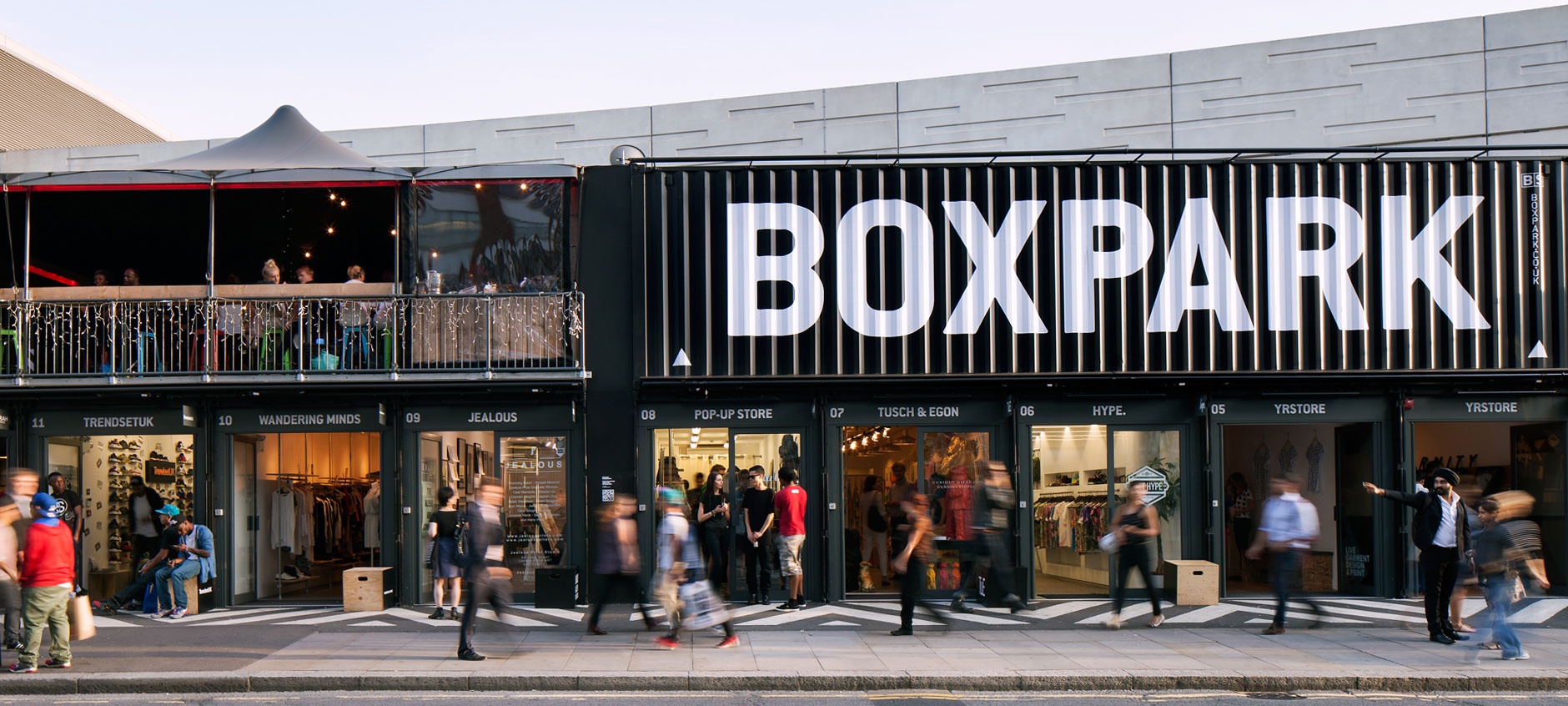Over 54% of the world’s population is now living in cities and this figure is expected to reach 66% by 2050. So with rising numbers, the prospect of a 24 hour consumer economy means that brands and cities are becoming bolder and more experimental with their visions in order to create a sense of place. New brands, concepts and installations are transforming urban environments to cultivate, serve and celebrate community, and the London scene right now has examples galore.
In London, the capital of street style, Millennials are 24% of the population, creating a hungry following of people that openly embrace new concepts and tastes.
They seek connectivity at all levels, seen in trends towards full service fitness centers like 1Rebel and Psycle emerging and broadening their appeal in our midst, taking elements that were once very niche & broadening their appeal. Smartly appointed multi-purpose lounges with refreshment zones and state-of-the-art equipment also aid to their appeal as one-stop shops for fitness & well being. But this doesn’t only exist in the wellness industry; millenials are also the reason that street food destinations such as Dinerama in Shoreditch or Hawker House in Canada Water (both Street Feast productions) have been implemented with huge success.
Boxpark, a shipping container phenomenon offering an urban mix of independent and global fashion, lifestyle and food, was arguably one of the key pioneers for modern placemaking in London. The ‘world’s first pop-up mall’ opened in 2011 in the creative heart of London, and this in turn has helped to now make Shoreditch a major cultural interchange.
Aside from enjoying food, drinks and shops, Boxpark offers all sorts of events, many of which are free of charge. Expect everything from exhibitions, fitness and even full-on performances with talented local musicians. Its designers describe Boxpark as a more ‘interesting environment for the consumer’, because its playful nature has created a real gathering for the whole community. Boxpark CEO Roger Wade said that Shoreditch is now part of the ‘casual dining revolution in the UK’.
More recently, we’ve seen Boxpark expand its reach into a larger format in its second London location, Croydon – a location choice that may have surprised some, but evidence were it needed that this isn’t a passing trend reserved for the cool kids in Hoxton and Hackney.
London Mayor, Sadiq Khan, wants Croydon to ‘bid to be London Borough of Culture’ and Boxpark Shoreditch has certainly helped it on its way.
Boasting over 1.1 million people, Croydon is now London’s largest borough and Boxpark Croydon’s designers define it as ‘the new home of the capital’s street art movement and the ‘silicon valley’ of the south – where anybody could come after work to enjoy a beer or on week-ends for a diverse array of events within 20,000 square feet exclusively dedicated to food and beverage.
Regardless of location, it seems that Boxpark operates in the same way, with every occupier having the choice between ‘unit’ and ‘pop-up’ leases. In Shoreditch, the units are offered on flexible leases from 1 month and in Croydon, leases are longer but both offer brands the chance to experiment with new ideas thus keeping the ‘discovery’ and ‘repeat visit’ appeal of the destination high for locals and tourists alike.
So what’s in it for the occupiers? The retailers of Boxpark can benefit from an affordable and flexible offer – a chance to truly test their brand offer amongst London’s most receptive and responsive consumer class, whilst restaurateurs can also experiment with new ideas and evolve those that work best.
As places evolve, enhancements to the public realm usually follow to make people want to stay there longer, and this in turn breathes life and vitality. The future for Boxpark seems similarly invested, with Roger Wade announcing a diverse range of events for all age groups, so that the appeal of the Boxpark experience becomes widened and his destinations become cemented as part of the landscape for the longer term.
So the big question really is whether the Boxpark model is a passing trend or is the concept here to stay? Whether you see this as brand building or placemaking there can be no denying that this approach forms an intuitive and highly successful blueprint for the urban brands and developers of the future.
